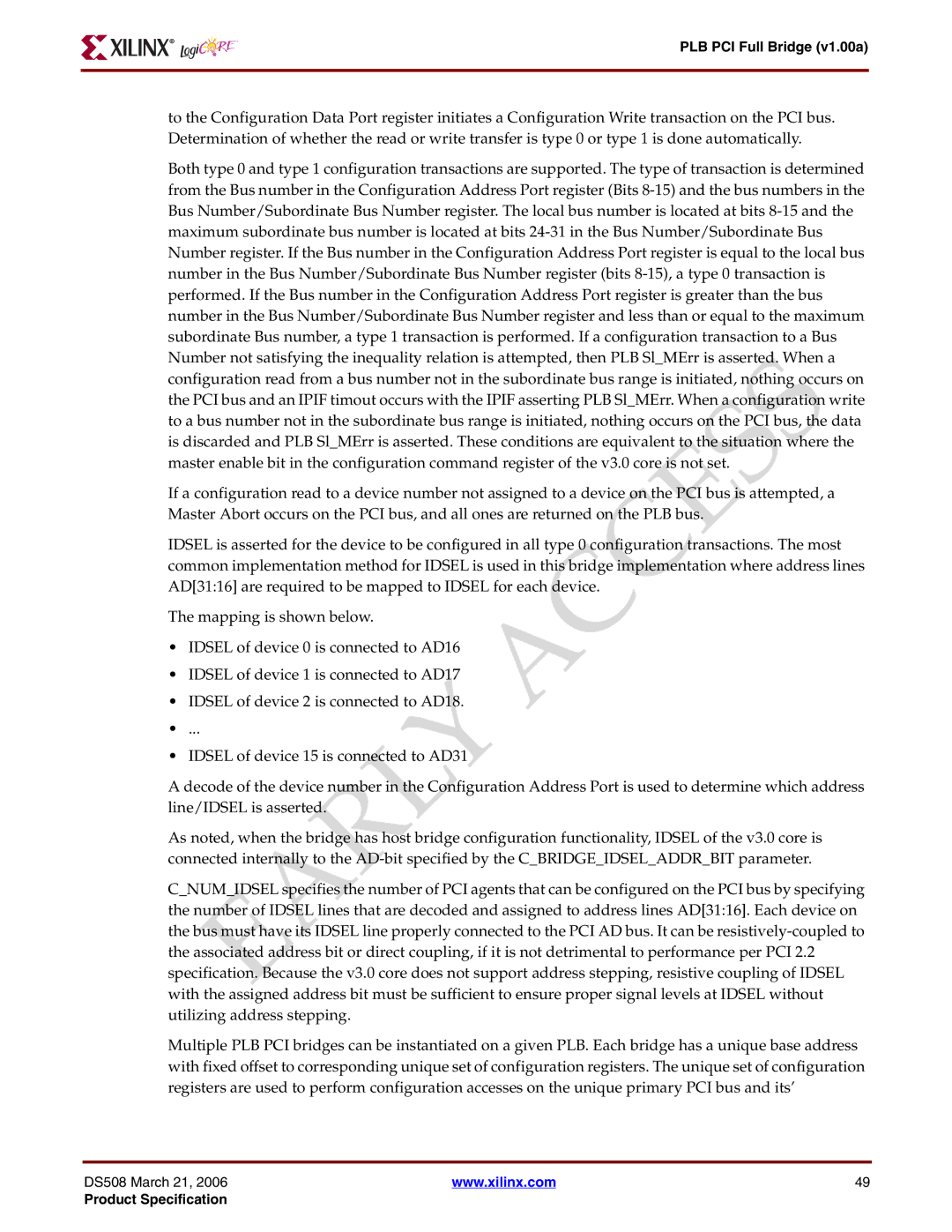
PLB PCI Full Bridge (v1.00a)
to the Configuration Data Port register initiates a Configuration Write transaction on the PCI bus. Determination of whether the read or write transfer is type 0 or type 1 is done automatically.
Both type 0 and type 1 configuration transactions are supported. The type of transaction is determined from the Bus number in the Configuration Address Port register (Bits
If a configuration read to a device number not assigned to a device on the PCI bus is attempted, a Master Abort occurs on the PCI bus, and all ones are returned on the PLB bus.
IDSEL is asserted for the device to be configured in all type 0 configuration transactions. The most common implementation method for IDSEL is used in this bridge implementation where address lines AD[31:16] are required to be mapped to IDSEL for each device.
The mapping is shown below.
•IDSEL of device 0 is connected to AD16
•IDSEL of device 1 is connected to AD17
•IDSEL of device 2 is connected to AD18.
•...
•IDSEL of device 15 is connected to AD31
A decode of the device number in the Configuration Address Port is used to determine which address line/IDSEL is asserted.
As noted, when the bridge has host bridge configuration functionality, IDSEL of the v3.0 core is connected internally to the
C_NUM_IDSEL specifies the number of PCI agents that can be configured on the PCI bus by specifying the number of IDSEL lines that are decoded and assigned to address lines AD[31:16]. Each device on the bus must have its IDSEL line properly connected to the PCI AD bus. It can be
Multiple PLB PCI bridges can be instantiated on a given PLB. Each bridge has a unique base address with fixed offset to corresponding unique set of configuration registers. The unique set of configuration registers are used to perform configuration accesses on the unique primary PCI bus and its’
DS508 March 21, 2006 | www.xilinx.com | 49 |
Product Specification
